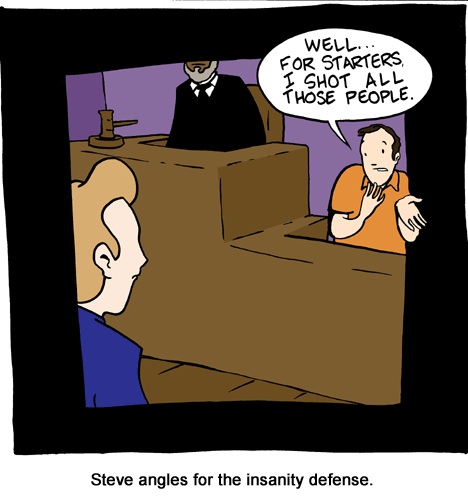Shakespeare Follow-Up: Lie Detection
Friday, June 30th, 2017In Macbeth, King Duncan receives a report on the execution of the Thane of Cawdor, who had betrayed him in the war against Norway. Duncan notes his own surprise at the deception:
There’s no art
To find the mind’s construction in the face:
He was a gentleman on whom I built
An absolute trust.
No art to find the mind’s construction in the face? Is it really possible that nobody in Shakespeare’s time (or even Macbeth’s time) had thought to study this? And if not, where is Shakespeare getting the idea from? My Arden Macbeth (Sandra Clark and Pamela Mason, eds.) says that it is proverbial, but that only raises more questions about what is meant by it. In all honesty, I think it’s time to bring back the Shakespeare Follow-Up.
First of all, the idea that different emotions would register in an observable way has always been as plain as the smile on your face. If anyone wants to doubt that, they need only look at the types of masks used in ancient Greek theatre to represent comedy and tragedy and see if they can tell which is which.

Wait, wait, don’t tell me…
So the idea of finding the mind’s construction in the face was well known in Macbeth’s time. But what about someone who intends to deceive? How could Duncan have uncovered Cawdor’s treachery?
As long as there have been liars, there have been techniques attempting to reveal them, which have had various degrees of accuracy. In ancient China, they used to put dried rice in a suspect’s mouth and ask them to spit it out. If they were lying, their mouths would be too dry to spit out the rice. At least, that’s what they said on The Unit (see 5:30 to 7:10 below):
In the clip, Jonas mentions the witch trials, and indeed, the trial by ordeal was a common method of uncovering deceivers throughout medieval Europe, whether by water, combat, fire, or hot iron. As Europe approached the Renaissance, these beliefs began to slowly evolve, marking a significant gap between the worldviews of Macbeth’s time and Shakespeare’s.
Shakespeare himself seemed intrigued with the idea that one could alter one’s own face to conceal evil intentions. Hamlet has an epiphany that “one may smile, and smile, and be a villain.” And in Henry VI, Part Three, the future King Richard III actually brags about being such a villain:
Why, I can smile, and murder whiles I smile,
And cry ‘Content’ to that which grieves my heart,
And wet my cheeks with artificial tears,
And frame my face to all occasions.
Could Shakespeare have been influenced by the writings of French philosopher Michel de Montaigne? In his late 16th-century essay Of Physiognomy, Montaigne muses on this very question, ascribing moral implications to a false aspect:
The face is a weak guarantee; yet it deserves some consideration. And if I had to whip the wicked, I would do so more severely to those who belied and betrayed the promises that nature had implanted on their brows; I would punish malice more harshly when it was hidden under a kindly appearance. It seems as if some faces are lucky, others unlucky. And I think there is some art to distinguishing the kindly faces from the simple, the severe from the rough, the malicious from the gloomy, the disdainful from the melancholy, and other such adjacent qualities. There are beauties not only proud but bitter; others are sweet, and even beyond that, insipid. As for prognosticating future events from them, those are matters that I leave undecided.
Sorry, Duncan.
The 18th-century actor David Garrick turned this vice into a virtue, developing great fame for his repertoire of facial expressions that could be used to convey a wide range of emotions on stage. Charles Darwin, in his 1872 work The Expression of the Emotions in Man and Animals, identified a specific set of facial expressions that he believed to be universal to humans as a product of evolution. Today, we know that, while many facial expressions are generally universal, they can be profoundly influenced by culture.
In the 20th century, the rise of the polygraph machine added an extra level of science to lie detection. The machine registers physiological responses the subject exhibits while answering questions. It’s not infallible, and it’s not unbeatable, but it just might have been able to reveal the Thane of Cawdor’s treachery, had it been available to apply.
But as far as finding the mind’s construction in the face, we should turn to the poker community, which has made a small science of identifying expressions, statements, and actions that reveal the strength or weakness of a players hand. When there’s money on the table, every advantage matters. These “tells” are catalogued, studied, observed, and – of course – faked when the opportunity arises. Some poker players, to defend against being read in this way, will conceal their faces with visors, hoodies, or even sunglasses. Interestingly enough, sunglasses were first invented in 12th century China, where they were originally worn by judges to assist them in concealing their emotions during a trial.
But the master of the art of finding the mind’s construction in the face would have to be Dr. Paul Ekman. Ekman is mostly famous for discovering the “micro expression,” a facial tell that sweeps across the face for a fraction of a second, betraying the subject’s true emotional state. They cannot be hidden. They cannot be faked. They also cannot be read without deep training, which Ekman provides.
Ekman and his research became the inspiration for the Fox crime drama Lie to me*. On the show, Tim Roth plays Dr. Cal Lightman, a fictionalized version of Ekman. Each episode shows Lightman and his team using micro expressions and other scientific tells to find out the truth for desperate clients. If you’ve read this essay this far, you might enjoy the show:
So, with all of these clues available, how well does Duncan learn from his experience with the traitorous Thane of Cawdor? He grants the now-available title to Macbeth, and then Macbeth kills him. If there was an art to find the mind’s construction in the face, Duncan was very, very bad at it.



